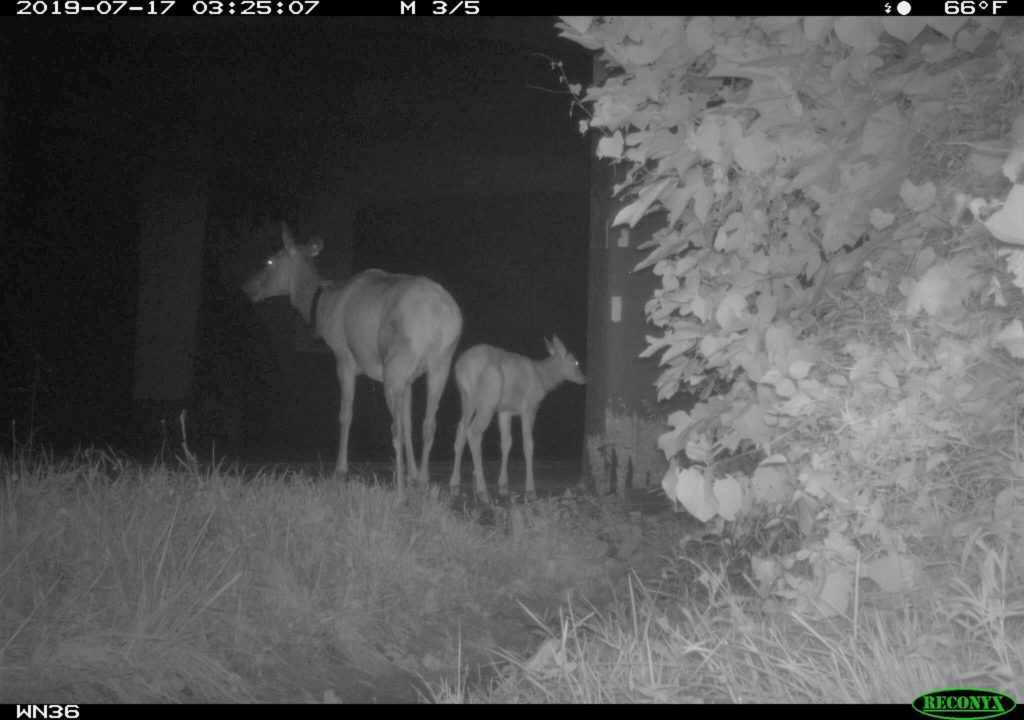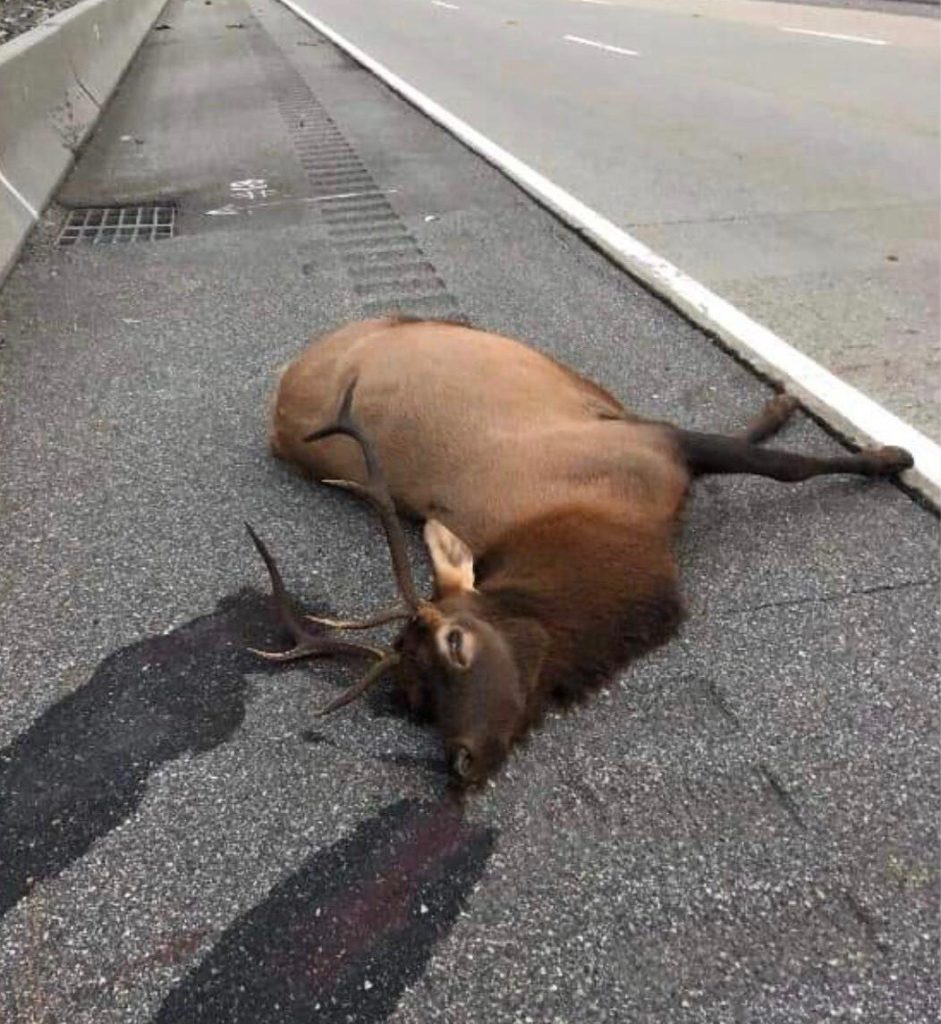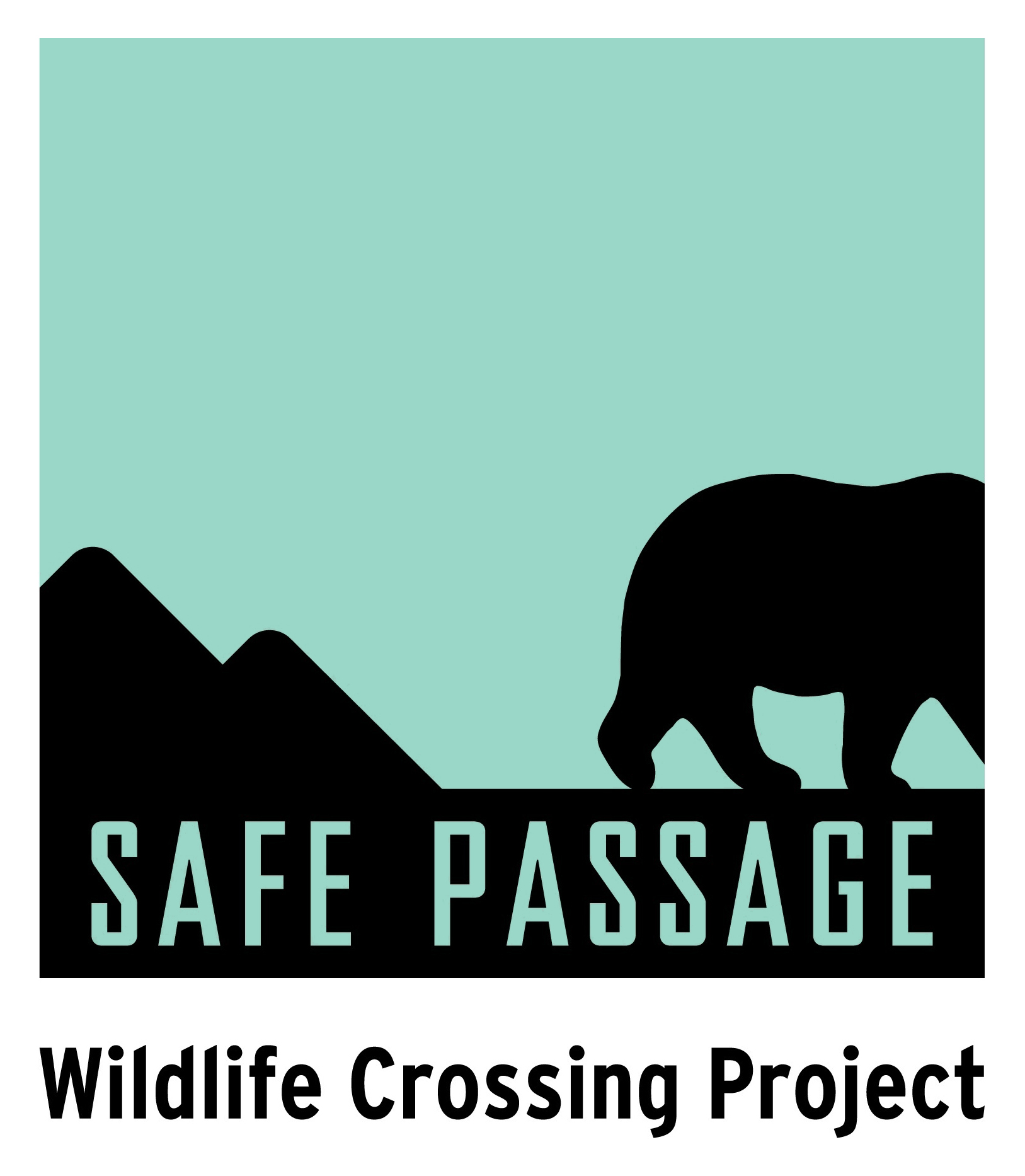By Jeffrey Hunter
Safe Passage is a project whose foundation and strengths are partnership and collaboration. In 2019, National Parks Conservation Association and Wildlands Network partnered on a two-year research project to identify mortality hotspots and solutions to wildlife deaths along a 28-mile stretch of Interstate 40 in Tennessee and North Carolina.
At the junction of this interstate project lies the Appalachian National Scenic Trail. The “AT,” as it is commonly referred to, is arguably the world’s best-known hiking trail. But the trail is much more than a recreational resource. The AT is a 2,198-mile wildlife corridor, a sanctuary for things wild and free.
Just seven months into our research, our wildlife cameras captured a photo of a cow elk and her calf on the AT where it crosses under I-40 at the Waterville Road exit. In the image, you can see a white blaze painted on the highway bridge pillar! Yes, this large ungulate and her yearling were using the AT to safely cross beneath the busy road and “get to the other side.”
In the last few years, the Appalachian Trail Conservancy (ATC) has broadened its view beyond the narrow trail corridor. The Appalachian Trail Landscape Partnership takes a broad approach to conserving the trail and its surrounding lands. In 2021, the National Park Service and the ATC held a six-part Science and Stewardship Symposium. Safe Passage was featured in Session 3, Part 2 of this series and you can download a digital copy of the proceedings here.

In December 2022, NPCA Conservation Biologist Steve Goodman and I spent a morning out on the AT with Matt Drury, the ATC’s Associate Director of Science and Stewardship. To spend a few hours in the field with Matt is an opportunity to learn about the living landscape that the trail wends through on its way from Georgia to Maine. In addition to discussing landscape connectivity as it relates to the trail and highways, we talked about the challenge that invasive exotic species like the Emerald Ash Borer and Chinese silvergrass (Miscanthus sinens) pose to the integrity of the natural systems that surround the AT.
Matt is committed to deepening his organization’s partnership with the Safe Passage collaborative. And for good reason. Beyond I-40, the Appalachian Trail crosses beneath a number of busy interstates, including I-26 at Sam’s Gap on the Tennessee–North Carolina border. In September 2019, a young bull elk was struck and killed on I-26, just a few miles from the Appalachian Trail. Yes, the issues that we’re addressing along I-40 can be found up and down the length of the trail.
“The Appalachian Trail traverses the most important ecological corridor in the Eastern US and the ATC is continually working with partners to enhance, restore, and connect conservation lands whenever possible,” Matt said. “As surrounding habitat is lost, it becomes increasingly important to maintain, improve, and restore wildlife habitat and provide safe passage for the denizens of the AT landscape.”
We are grateful for our burgeoning partnership with the Appalachian Trail Conservancy and look forward to deepening our ties in 2023.
Jeff Hunter is the Southern Appalachian Director for National Parks Conservation Association. In 2000, he hiked the Appalachian Trail from Georgia to Maine. He currently serves on the Steering Committee for the Appalachian Trail Landscape Partnership.

